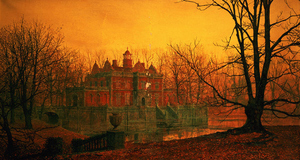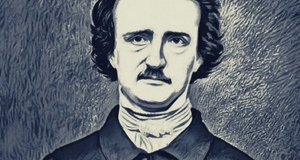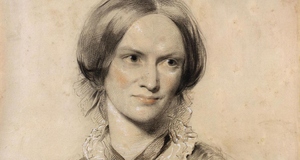Revenant Narratives and the Representation of Demonic Lovers in English Gothic Ballads
By
2021, Vol. 13 No. 04 | pg. 1/1 AbstractThe Demon-Lover functions as a significant motif in English Gothic ballad tradition, which scholar Hugh Shields articulates as a “supernatural intrusion into a narrative which is of this world” (Shields p. 107). While this intrusion implies the violent and problematic sexual dynamics of the Demon-Lover Motif, Shields’s statement also speaks to how writers in the late eighteenth and early nineteenth centuries capitalized on the popularity of Gothic conventions such as horror and the grotesque supernatural to imperfectly resurrect the declining literary traditions of folklore and oral narrative. This article explores the ways in which various representations of the Demon-Lover challenge traditional conceptions of this ballad type through a comparison of three English Romantic ballads: Anne Bannerman’s The Dark Ladie, Matthew Lewis’s The Water-King, and William Taylor’s Ellenore. I contend that it is more significant to understand this ballad type as symbolic of victimization and power, not exclusively in a gendered way, but as a representation of the Romantic Gothic impulse to revive older forms of narrative. However, that which is dead cannot return to life unharmed; while it may carry traces of its former self, it is unnatural and arguably horrific. Screaming maidens, laughing demons, and the turbulent sea: this chorus of hysteria Matthew Lewis conducts in his 1796 ballad The Water-King aurally represents the tale’s climactic action, during which an innocent Maiden is drowned by her cruel, demonic lover. By deliberately breaking the rhythmic pattern of the ballad in the final lines of this verse, Lewis’s utilization of cacophony overwhelms and unsettles the reader. The violent and uncomfortable poetic climax of The Water-King structurally parallels a significant theme of the Demon-Lover Motif in English Gothic ballad tradition, which Hugh Shields defines as a “supernatural intrusion into a narrative which is of this world” (p.107). While this intrusion implies the violent and problematic sexual dynamics of the Demon-Lover Motif, Shields’s statement also speaks to how writers in the late eighteenth and early nineteenth centuries capitalized on the popularity of Gothic conventions such as horror and the grotesque supernatural to imperfectly resurrect the declining literary traditions of folklore and oral narrative. This essay will explore the ways in which various representations of the Demon-Lover challenge traditional conceptions of this ballad type through a comparative analysis of three English Romantic ballads: Anne Bannerman’s The Dark Ladie, Matthew Lewis’s The Water-King, and William Taylor’s Ellenore. Rather, it is more significant to understand this ballad type as symbolic of victimization and power, not exclusively in a gendered way, but as a representation of the Romantic Gothic impulse to revive older forms of narrative. However, that which is dead cannot return to life unharmed; while it may carry traces of its former self, it is unnatural and arguably horrific. In her volume Demon-Lovers and Their Victims in British Fiction, Toni Reed emphasizes how “Demons and the possibility of seduction and defilement at their hands have always fascinated people” (p.20). Reed seems to suggest that the thrill of the simultaneous feelings of attraction and repulsion influenced widespread consumption of Gothic texts amongst the reading publics of the late eighteenth and early nineteenth centuries. This tension between allure and horror felt by readers of the Gothic is effectively represented by the Demon-Lover figure, as Reed proposes. Consider this passage from William Taylor’s 1796 ballad Ellenore:
By juxtaposing the visual and aural images of a funeral – corpses and lamentations – with allusions to the impending marriage between the Demon-Lover and Ellenore, Taylor creates an unsettling atmosphere that negotiates these feelings of attraction and repulsion localized on the figure of the Demon-Lover, as he is the speaker of this macabre verse. The succession of these two ceremonial images creates a dichotomy between the gruesomeness of death and the joy of marriage. The uncertainty inherent in the duality of “seduction and defilement” (Reed p.20) Ellenore exemplifies offers a parallel to the social reality of the time. Indulging in female sexual fantasies – like the mysterious lover in “armure, black as cinder” (line 234) escaping with the maiden “At midnight only” (line 105) – signifies a social taboo, a taboo that demands retribution for the sexually deviant woman. Consequently, critics like Reed have come to define the Demon-Lover Motif in Gothic balladry as “a struggle between misogynist and female victim resulting in her psychological or physical destruction” (p. vii). Within the realms of Gothic fiction and its contextual backdrop, this motif works to thematize male dominance over women. In Lewis’s The Water-King, the Water-King’s drowning the Maid dramatizes masculine hegemony over the virginal, naïve woman. As the Maid cries “‘Stop! Stop! My Love!’” (line 57), the repetition of the prohibitive infusing the line with a tone of panic, the Water-King exclaims in eager tandem: “‘Oh! lay aside your fears, sweet Heart! We now have reached the deepest part’” (lines 63-64). Not only are her protestations drowned out by the Water-King’s seductive and subduing chorus, but she is also physically overwhelmed by the sea:
The tone of these verses emphasizes the struggle Reed alludes to between the Demon-Lover and his victim, as the Maid’s palpable hysteria does nothing to inhibit his destructive desire. Lewis further utilizes the structure of the ballad to maintain suspense as a manifestation of Gothic literary fashion. The action of succumbing to the Water-King’s power unfolds across five stanzas, which not only mimics the gradualness of drowning for the reader but also produces a claustrophobic effect. As such, the gender hierarchies and feminine powerlessness in The Water-King are represented and maintained through dialogue, imagery, and poetic structure. The sense of subjection permeating both Ellenore and The Water-King demands attention given that “the demon-lover conflict expresses the collective oppression of women, and as a body of literature represents a collective warning to women not to deviate from male-defined roles, for those who do are punished” (Reed p.9). For the specifically Gothic ballad genre, the narrative climax often dramatizes the hierarchal dynamic of power between the genders. The achievement of physical climax unfolds upon the marriage of the Demon-Lover and his victim. The motif of marriage rendered grotesque parallels the ballad genre’s appropriation by Gothic convention. Consider the following exchange between Taylor’s Demon-Lover and Ellenore as he whisks her away for their midnight nuptials:
This passage’s nuanced language spatially situates the lover amongst the grotesque emblems of death typical of Gothic fiction: cold graves, coffin planks, and funeral shrouds. Taylor’s application of the grotesque consequently perverts the image of the bridal bed into the funeral bed and reveals the lover’s revenant state to the reader, yet Ellenore’s maintained ignorance contributes to the terror of suspense that informs the reader’s reception of the Gothic. Furthermore, Ellenore’s inquiry after the Demon-Lover’s “home” (line 129) curates a significant, unsettling contrast with the image the speaker describes. The home connotes images of warmth and family, particularly when attributed to a feminine speaker like Ellenore. The cold, uninviting language of the grave Taylor attributes to his speaker subverts this expectation, however. These dichotomies between the bridal bed and the funereal bed, the home and the grave, symbolize the masculine oppression and punishment of deviant femininity Reed identifies as central to the expression of the Demon-Lover ballad motif. With Ellenore “All in her sarke, as there she lay, Upon his horse she sprung” (lines 141- 142), her acquiescence to the Demon-Lover’s seduction and escape in a state of sensual, improper undress embodies the rejection of compliant femininity Reed notes. Consequently, a macabre shadow falls over Ellenore’s hope for a romantic reunion with her beloved. The warm, inviting home a traditional marriage would grant has been denied to her, and as “she might no more Her living eyes unclose” (lines 251-252), it seems only appropriate that her bridal bed transmogrifies into a cold grave. However, the established expectations of this ballad type Reed and other critics describe – the sexually aggressive male lover, the submissive female beloved, and the fatal consequences for her disruption of acceptable feminine behavior – arguably essentialize the motif and limit its potential for a deeper meaning. While the violent expressions of male dominance dramatized by the Demon-Lover’s seduction and destruction of women should not be ignored, and indeed contribute significantly to the thematic and symbolic content of these ballads, one contends that this is not the only path of signification for the motif as it has been explored in and represented by the Gothic literary tradition. The presence of a female Demon-Lover in Anne Bannerman’sThe Dark Ladiechallenges this notion of male dominance over female passivity as the titular character reroutes the established expectations of the motif, subvertingwhomay be victimized by demonic power on the basis of gender.Specifically, Bannerman’s manipulation of the archetypal male gaze draws attention to the rupture between the genders and the power to victimize. Unlike the Water-King, who looks upon the Maid with “malignant eye” (line 5), or William’s ascent to Ellenore’s chamber as she sleeps – evocative of the voyeurism in tales such as Sleeping Beauty – Bannerman transforms the predatory and voyeuristic male gaze into one of terror, as “every knight, in chill amaze, Survey’d her one by one” (lines 28-29). Her repeated focus on ocular imagery signifies an inverted representation of gender that characterizes her interpretation of the Demon-Lover Motif. The Dark Ladie’s uncanny gaze ultimately serves as her source of seductive, demonic power within the narrative, for “when they tried to speak, that glare Still kept them mute with awe” (lines 41- 42)! The submissive and passive knights – specifically Sir Guyon, the beloved, who “‘Grew pale and trembled then’” (line 89) – undermine Reed’s conception of this ballad motif, for it is such feminized behavior that voids the knights of their power to be oppressive and destructive forces within the narrative. The conjunction of the Dark Ladie’s domination of the immediate narrative as the demonic character and Huart’s diegetic narrative exposes the limits to Reed’s argument regarding the Demon-Lover figure's symbolic potential. Bannerman’s subversive representation of the female Demon-Lover thus poses significant questions about the nature of seduction and victimization, broadening the motif’s potential to signify themes beyond an exclusively gendered context within this ballad tradition. The Demon-Lover Motif, as Reed and her contemporaries have conceived it, may be challenged on the basis of the folkloric past that underscores this motif, specifically in the tension between notions of resurrection and the demonic. In Ellenore, the grotesque stripping of the supernatural bridegroom at the ballad’s climax indeed exposes his status as a revenant – as opposed to a demonic – lover:
While Taylor’s grotesque, transformative language reinforces the sense of horror for both Ellenore and the reader, it does not explicitly entail that the lover has become a fully realized demon. Rather, “in his witherd hand you might The scythe and hour-glass see” (lines 243-244). This final detail Taylor incorporates further solidifies the lover’s revenant identity. Not only is he revealed to be a revived corpse, but these symbols arguably cast him as Death incarnate. According to Shields, this transformation exposes how “Poetry in ‘gothic’ style elaborated the theme of the revenant lover in a manner more remote from popular tradition by seeking thrills for their own sake and putting emphasis on the physical decay of the lover’s corpse” (p.101). Taylor’s Ellenore, with its corpse-cum-bridegroom, arguably capitalizes upon this Gothic vogue of “thrill for thrill’s sake” to achieve a purely dramatic effect. The Water-King, however, seems to align itself more with its folkloric origins as Lewis explicitly entitles his text a “Danish ballad” (p.207), an explicit response to the Nordic tradition from which he derives his narrative content. Drawing from such a source, then, Lewis’s Water- King is depicted as wholeheartedly demonic. Repeatedly referred to as a “Fiend” (line 5) or a “Spright” (line 80), Lewis’s language casts his Demon-Lover more as kin to the fairies, sprites, and aquatic people of Norse and Celtic folklore than as resurrected ghoul. Contrary to Taylor’s Revenant-Lover as a sweetheart recalled from the grave, Lewis’s Water-King lacks the same intimacy with the beloved, complicating the act of seduction. The Water-King achieves seduction only through deception, as it was “The Witch She gave him armour white; She formed him like a gallant knight” (lines 13-14). This allusion to magic and witchcraft solidifies the Water-King’s demonic status, as his transformation is evocative of the use of “glamour” to alter one’s appearance in folkloric tales. If one is equipped to critically assess the folk origins underscoring these English Gothic ballads of Demon-Lovers, one may more effectively conceptualize this motif as a Romantic desire to revive the ancient past through literature. This desire exhibited by writers such as Bannerman, Lewis, and Taylor emphasizes how the themes of literary ancestry and antiquarianism enriched the development of the Gothic as a literary genre. A critical question then emerges: can these more modern forms of literature successfully resurrect antiquated forms of narrative? The concern over literary form correlates to the theme of victimhood central to not only the motif of the Demon-Lover but to the Gothic genre as a whole. The victims of these ballads symbolize how oral narratives and folk traditions have become the victims of time and modernization in literary expression throughout the late eighteenth and early nineteenth centuries. Taylor arguably does so by reappropriating the motif for both allegorical purposes and “thrill for thrill’s sake” as a manifestation of the Gothic vogue. On the contrary, Lewis seems more mindful of the material from which he borrows and its place within ballad and oral narrative traditions, yet the moralizing stanza that concludes his ballad still situates it within a more modern context that warns against female sexual deviance. Therefore, one suggests that the renewal of these elements by English Gothic writers represents a nostalgic desire to return to an idyllic – dare one say Romanticized – past. The representations of the Demon-Lover in the ballads of Bannerman, Lewis, and Taylor signify how notions of “power, aggression, and victimization” (Reed p.10) may extend beyond the gender dichotomy that at times overwhelms this ballad motif. Rather, the victims in these ballads symbolize the broader issue of the ways in which oral narratives and folk traditions have become the victims of the passage of time and the evolution of literary perspective. It is significant to address how this narrative past cannot be perfectly reproduced, represented by the demonic and grotesque body of both the Demon- Lover and the Revenant-Lover. The hybridized bodily states of these figures also parallel the hybridity of genre that informs how the Gothic is conceptualized today as an interplay between older, folkloric tales and the modern impulse towards drama and terrifying thrills. Though preserved by adaptation, the irrevocable changes enacted by Gothic convention entail that both the life of the Demon-Lover and its source text are in a state of decay. This liminal state of being signifies how authors of the Gothic attempt to revive older forms of narrative such as oral balladry and folklore, yet cannot effectively do so without creating something gruesome, something unnatural, that is both half alive and half dead. ReferencesBannerman, Anne. (1802). “The Dark Ladie.” Tales of Superstition and Chivalry. Retrieved from http://digital.lib.ucdavis.edu/projects/bwrp/Works/BannATales.htm. Lewis, Matthew. (2010). “The Water-King.” The Monk. London: Bibliolis Books. Reed, Toni. (1988). Demon-Lovers and Their Victims in British Fiction. Lexington: University Press of Kentucky. Rix, Robert W. (2011). Gothic Gothicism: Norse Terror in the Late Eighteenth to Early Nineteenth Centuries. Gothic Studies, 13 (I), 1-20. http://www.ingentaconnect.com/contentone/manup/gothst/2011/00000013/00000001/art00002. Shields, Hugh. (1972). The Dead Lover’s Return in Modern English Ballad Tradition. Jahrbuch für Volksliedforschung, 1, 98-114. http://jstor.org/stable/847175?seq=I#page_scan_tab_contents. Taylor, William. (2000). Ellenore. In E.J. Clery And Robert Miles (Ed.), Gothic Documents: A Sourcebook, 1700-1820 (pp. 146-154). Manchester: Manchester University Press. Suggested Reading from Inquiries Journal
Inquiries Journal provides undergraduate and graduate students around the world a platform for the wide dissemination of academic work over a range of core disciplines. Representing the work of students from hundreds of institutions around the globe, Inquiries Journal's large database of academic articles is completely free. Learn more | Blog | Submit Latest in Literature |


















